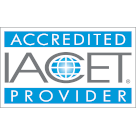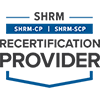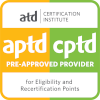Online Suite Information
43 | CEUs: 4.3
Credits:
Association for Talent Development (ATD) CI Credits: 44
Human Resources Certification Institute (HRCI) Credits: 35
- Strategic Business: 27
- General: 8
Society for Human Resource Management (SHRM) PDCs: 44
Certified Fundraising Executive (CFRE) Points: 42
Duration:
43 hours
Access Time:
730 Days
Program Modality:
Online Self-Paced
Location:
Online
Suite Cost:*
$ 899
Notes:
Certificate in Nonprofit Management
This online certificate program provides insight into how nonprofit professionals apply key concepts in their own organizations. Learners will be introduced to key current management issues for nonprofit organizations such as:
- Fundraising
- Board and volunteer development
- Budgeting
- Reading financial statements
- Leadership
- Marketing
- Setting strategic direction
Upon successful completion of all courses in this certificate program, you can download and print a Certificate of Completion. Courses included in this certificate program are listed at the bottom of this page.





Details




Module Information











